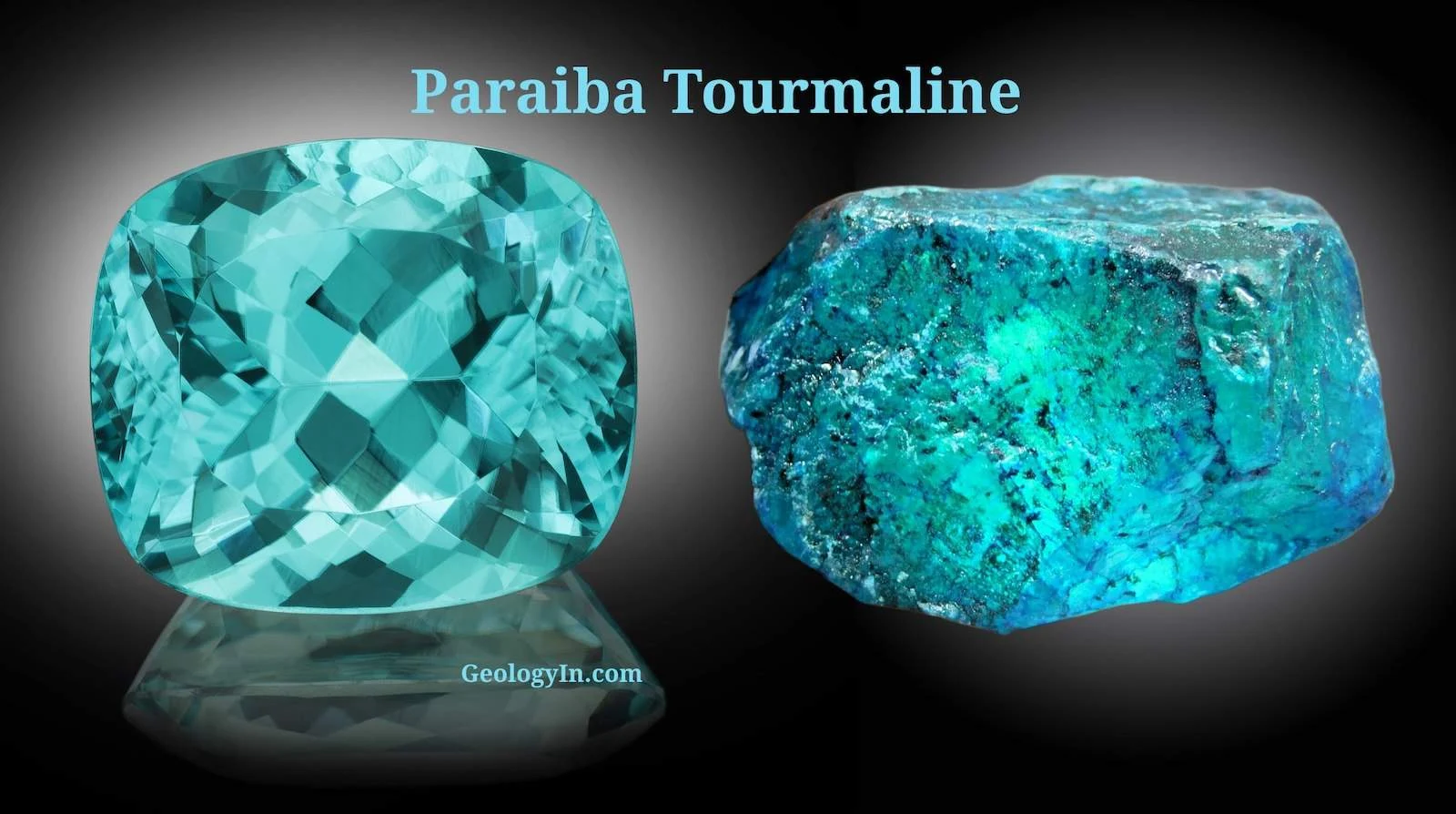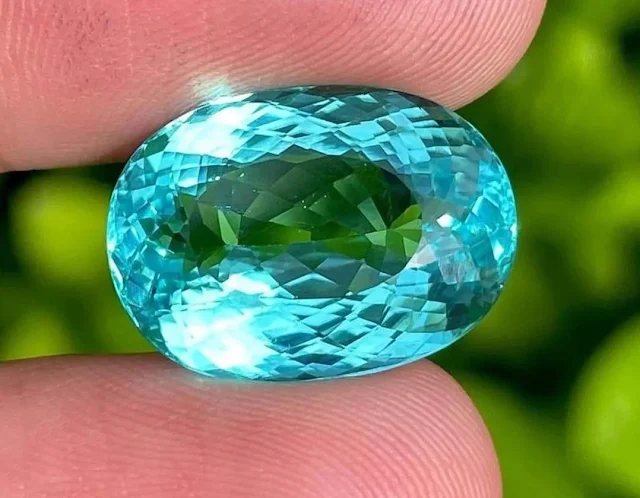What is Paraiba Tourmaline
Paraíba tourmaline is a rare and highly sought-after variety of the mineral tourmaline, renowned for its vivid, neon-like hues of blue, green, and turquoise. Its exceptional coloration results from trace amounts of copper and, in some cases, manganese in its chemical composition.
Discovered in the late 1980s in Brazil's Paraíba state by miner Heitor Dimas Barbosa, this gemstone captivated the world with its intense, glowing colors. Although originally sourced from Brazil, deposits of copper-bearing tourmaline have since been found in Nigeria and Mozambique. Despite these new sources, Brazilian Paraíba tourmalines remain especially prized for their historical significance and unique vibrancy.
The term "Paraíba" refers to this distinctive color variety regardless of origin, provided the gemstone exhibits the same copper-induced glow. These gems are among the most valuable in the world, with top specimens rivaling the prices of fine diamonds and rubies. Their rarity and unparalleled brilliance have made Paraíba tourmaline a favorite for collectors and high-end jewelry alike.
 |
| Paraiba Tourmaline Rough and Cut, from Brazil |
Paraiba Tourmaline Formation
Paraiba tourmaline, characterized by its vibrant neon blue and green hues, crystallizes in pegmatites, which are coarse-grained igneous rocks formed from the final stages of magma crystallization. Its unique color comes from trace elements of copper and manganese incorporated into the crystal structure during formation. Unlike most tourmalines, which acquire their colors through iron, manganese, chromium, or vanadium, Paraiba tourmaline derives its signature neon glow from copper.
Paraiba Tourmaline Properties
- Color: The most prized Paraiba tourmalines boast vibrant neon shades of blue and green, with occasional turquoise and violet hues. These colors primarily arise from traces of copper and manganese.
- Luster: Vitreous (glassy) to sub-vitreous (slightly duller glass).
- Transparency: Transparent to translucent.
- Hardness: 7-7.5 on the Mohs scale (moderately hard, can scratch glass).
- Crystal System: Hexagonal.
- Chemical Composition: Complex sodium lithium aluminum borosilicate with additional elements like copper and manganese.
- Density: 2.84-3.10 g/cm³ (moderately heavy).
- Fracture: Conchoidal or uneven (tends to break with smooth, curved or irregular surfaces).
- Cleavage: None (difficult to split in a predictable direction).
- Luminescence: Weak fluorescence may be present in some specimens.
 |
| Paraiba (cuprian) Tourmaline on Quartz From: Batalha mine, Junco do Serido, Paraíba, Brazil Photo: Mineral Auctions |
Gemological Properties
- Pleochroism: Strong, with colors shifting from blue to green depending on viewing angle.
- Refractive Index: 1.603-1.655.
- Double Refraction: High.
- Dispersion: High (creates lively fire).
Paraiba Tourmaline Rarity
Paraiba tourmaline is one of the rarest gemstones in the world, with an estimated ratio of one Paraiba mined for every 10,000 diamonds. The primary source of Paraiba tourmaline is Brazil, with deposits in the states of Paraíba and Rio Grande do Norte. Smaller deposits exist in Mozambique, Nigeria, and Namibia, but these are less significant and produce fewer high-quality stones.
 |
| Paraiba Tourmaline Gemstone. |
Paraiba Tourmaline Value
Paraiba tourmaline is one of the most expensive gemstones in the world, with prices exceeding those of most diamonds. This is due to its rarity, vibrant color, and increasing demand.
Price Range:
- Small (0.20-0.99 carats): $150 to $15,500 per carat.
- Medium (1.00-1.99 carats): $550 to $30,000 per carat.
- Large (2.00+ carats): $950 to $55,000 per carat, with exceptional stones reaching $100,000+.
Several factors influence the price tag:
- Color: The vibrant neon hues command the highest prices,
- Size: While larger stones are rarer and often more expensive.
- Clarity: Eye-clean Paraibas with minimal inclusions are more valuable than those with noticeable flaws.
- Origin: Brazilian Paraibas typically command premium prices due to their historical significance and exceptional quality.
 |
| Neon Paraiba Tourmaline Gemstone |
Why is Paraiba Tourmaline So Expensive
Paraiba tourmaline's astronomical price hinges on extreme rarity, surpassing even diamonds. Its vibrant neon hues, unmatched in intensity, and strong investment potential make it a collector's dream. Each stone, a masterpiece of nature, commands a premium due to limited supply, captivating color, and potential for value growth.
 |
| Paraiba Tourmaline Ring and Earring |
In conclusion, the rarity of Paraiba tourmaline, coupled with its unique and captivating colors, limited sources, and the challenges associated with mining and treatment, contribute to its high market value. As a result, this gemstone has become a symbol of luxury and exclusivity in the world of fine jewelry.
Read also:
Tourmaline: The Colors and Varieties of Tourmaline
Watermelon Tourmaline: What Is Watermelon Tourmaline
Rubellite - Properties, Value, Occurrence and Uses








